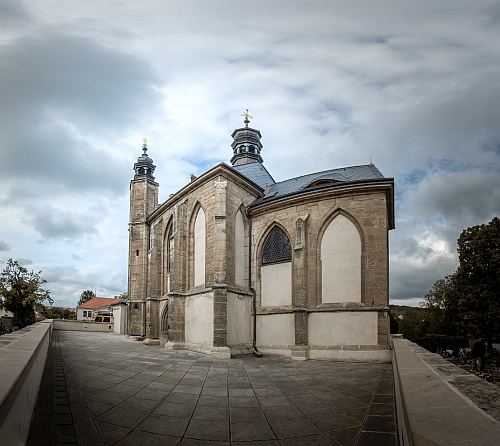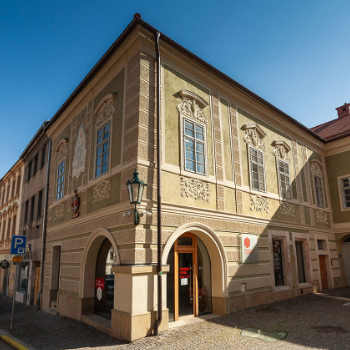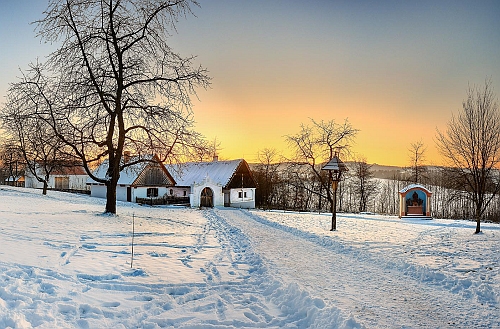The Kačina Chateau and grounds
Svatý Mikuláš –
Kutná Hora
Kačina chateau is one of the most important Empire buildings in the Czech Republic. Je to příklad klasicistní nebo-li empírové architektury a vystavěn je v naprosto čistém stylu. Od dob svého vzniku nedoznal zámek žádných architektonických změn. The National Museum of Agriculture is located on the castle grounds and you will find there, for example, the “Kingdom of Bees”, “Story of Wood” or “Models of Folk Buildings” exhibitions.
Jan Rudolf Chotek, then the highest burgrave of the Bohemian Kingdom, had it built as his summer residence in 1806-1824. The Choteks were one of the most important Czech families and managed the estates of Bělošice, Nové Dvory (Kutná Hora parish) and Veltrusy. Why an area? Kačina is not only an Empire castle, but it is surrounded by a large castle park. It is even older than the castle itself. As early as 1789, in connection with the preparation of the castle site, a number of landscaping works were carried out and the foundations of the park were laid.
The design of the Kačina Castle garden was developed by the eminent Viennese botanist, N. J. Jacquin (1727-1817), director of the Imperial Garden in Schrönbrunn. The original oaks and pines were gradually supplemented by other species of trees in the park. Since the early 1870s, the Choteks had foreign tree species imported and planted here. This is how Tyrolean larches, but also chestnut trees, acacias, pine trees and mulberry trees came to Kačina. The author of the architectural design was Ch. F. Schuricht, but the construction itself was carried out by the Prague building councillor J. F. Joendel and in the last several years by the archbishop’s Olomouc building councillor A. Arche.
The only elevated area in the area, called V Kačinách, was chosen for the construction of the castle, meeting the requirement of the classical aesthetics to build prominent buildings so that they stand out above their surroundings.
In 1950 the building was made available to the Agricultural Museum as a museum and exhibition venue. After 1995, the original agricultural and food expositions were expanded to include a presentation of the life of various social classes in the 19th century in the countryside, and gradually the Chotek library, the theatre and the so-called Chotek Exposition were opened, presenting the history of the Chotkek family, especially the life of the generations tied to Kačina. In 2001, the Kačina Castle became a national cultural monument by government decree.
For more information about current exhibitions and opening hours, visit the chateau’s website.


